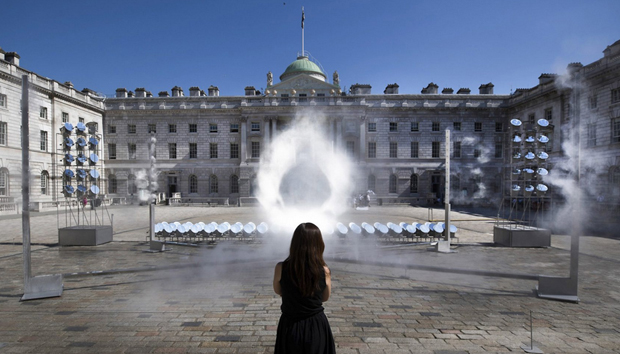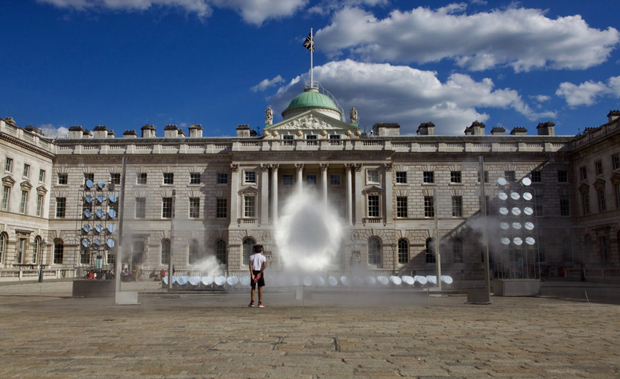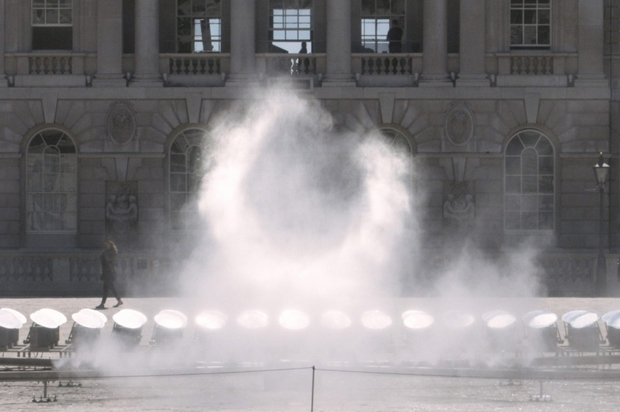 LONDON.
LONDON.
99 robotic mirrors continuously move throughout the day to follow the sun like sunflowers. These mirrors, arrayed across two 5 meter tall towers and one 15 meter long track, each emit a beam of sunlight into a cloud of water mist. The beams are computationally aligned so that together they draw a bright circle in the air. Dependent entirely on the presence of the sun for its completion, the work explores the possibilities and limitations of technology to capture what is out of reach, to harness nature and bring the sun down to earth. Collaborating with the natural fluctuations in the climate, Halo appears only for moments when the wind, sun, water, and technology coincide, creating a form which exists between the material and immaterial.
The installation superimposes diverse timescales. The sun is beyond humanity’s timeline; as the solar energy interacts with the earth, it creates the clouds which occasionally pause the installation as they shadow the mirrors; The daily passage of the sun across the sky is traced out by the mirrors moving in tandem; The sun forces the wind which, second-to-second, catches the mist and chaotically carries it into the focused sunlight, drawing the halo. The moment that Halo emerges in the air, it briefly superimposes the transience of momentary experience with the immutability of the sun.
Halo’s open source navigation system uses Bayesian inference machine learning developed in collaboration with London’s Improbable Worlds Limited. It is the first project where studio Kimchi and Chips worked with natural light as a material and collaborated with the unpredictability of the weather. 

 Photos:Studio Kimchi and Chips.
Photos:Studio Kimchi and Chips.








